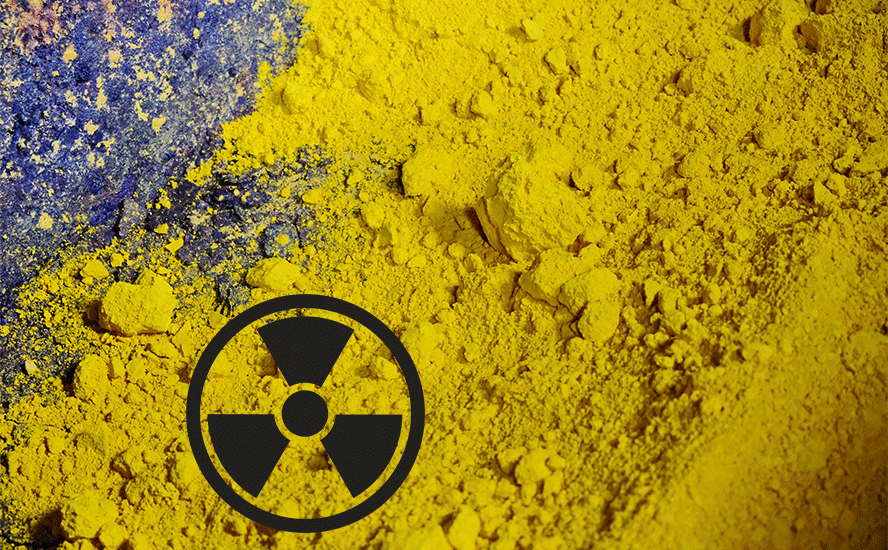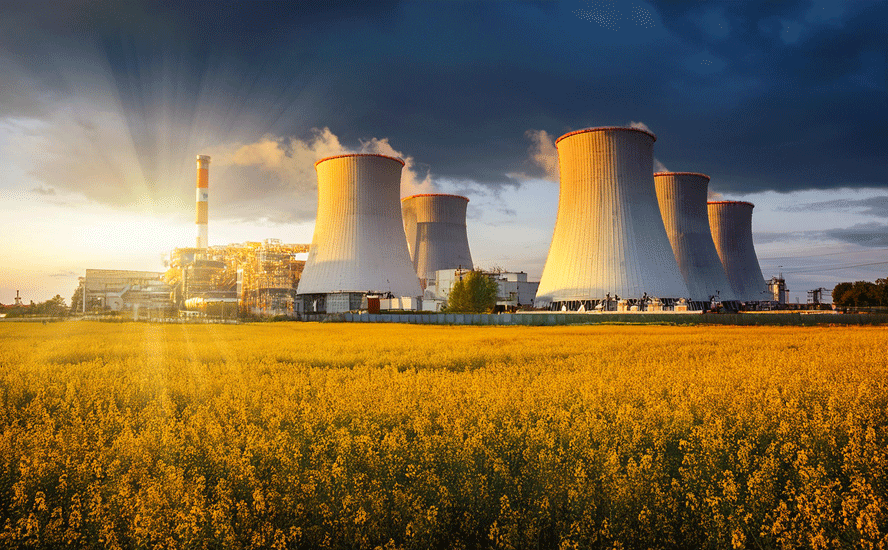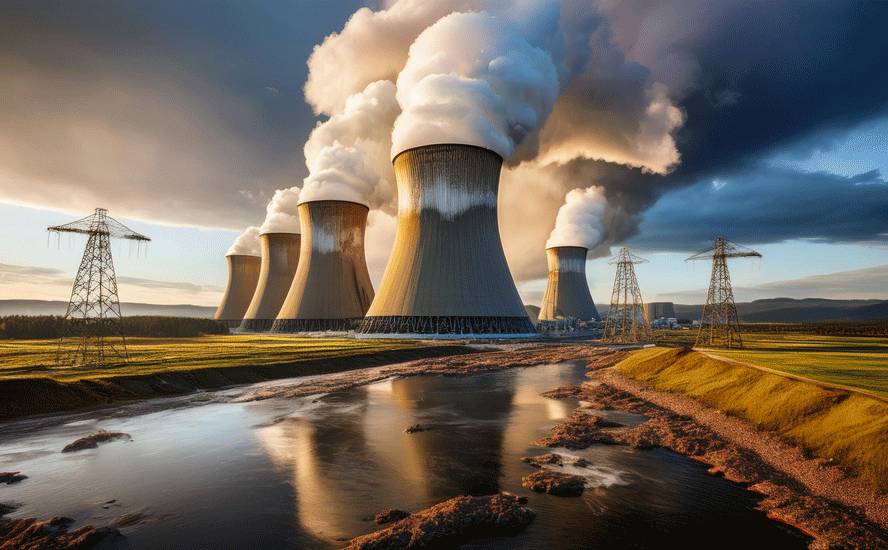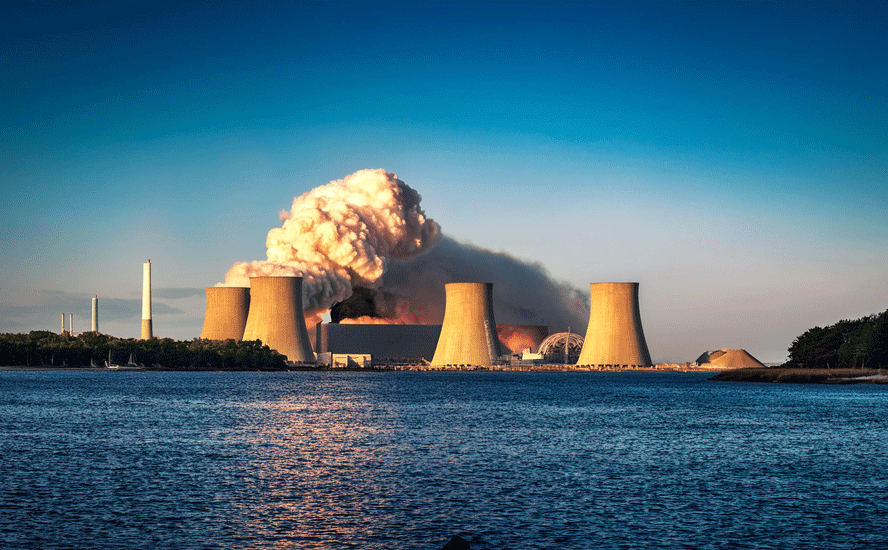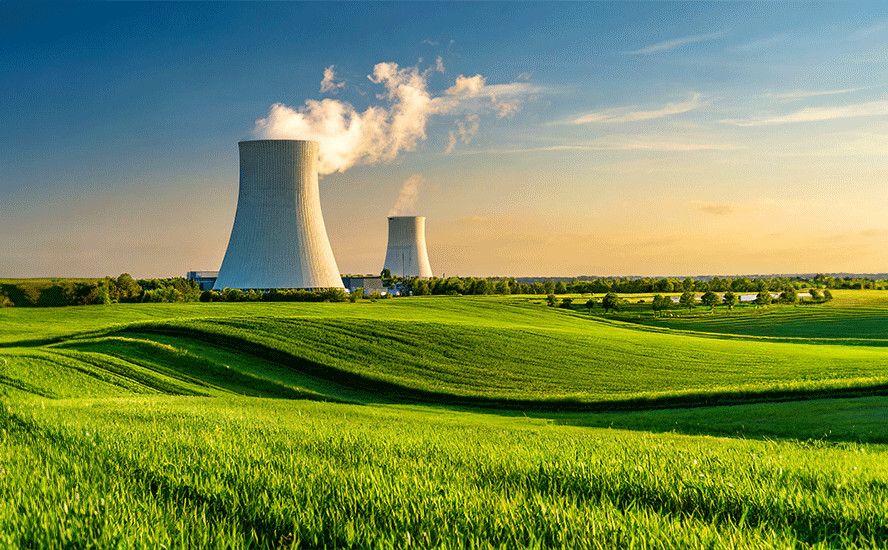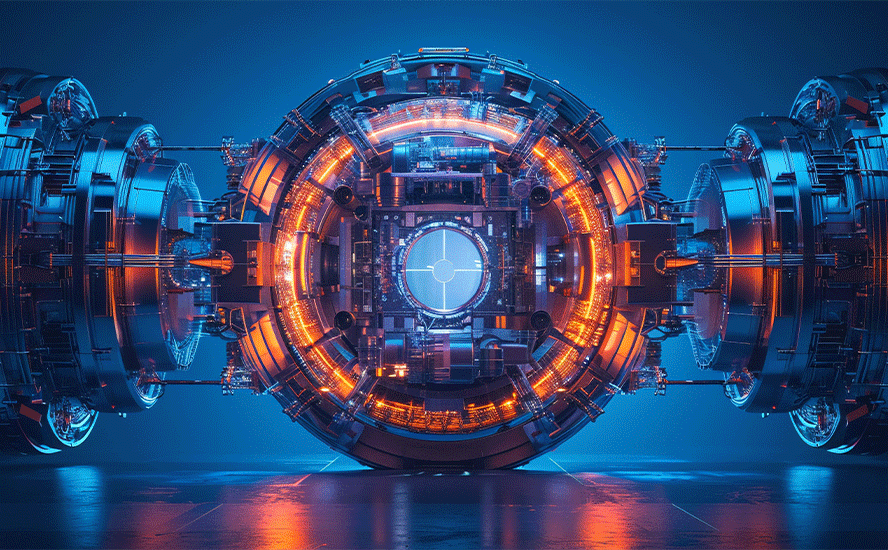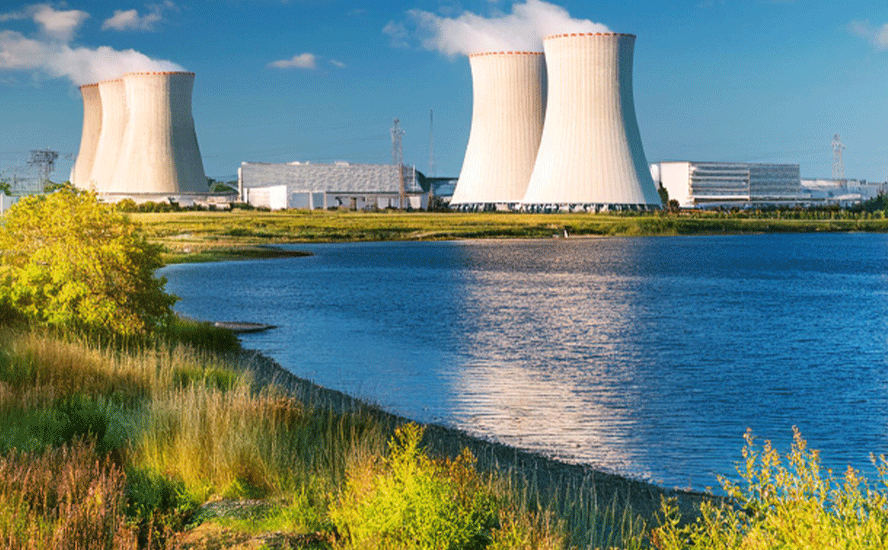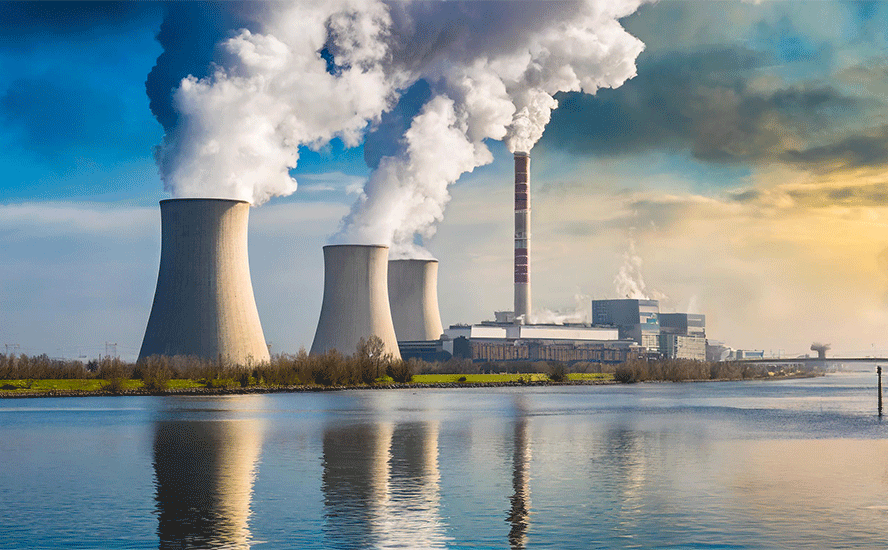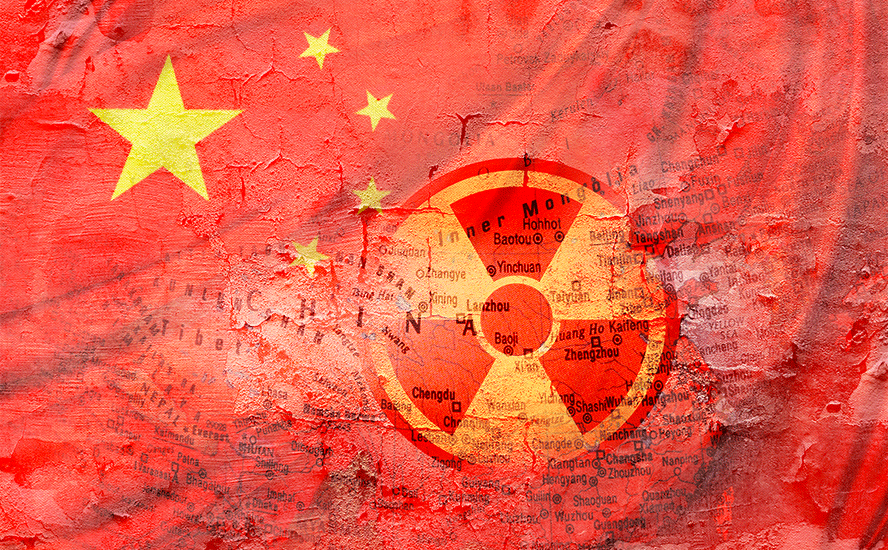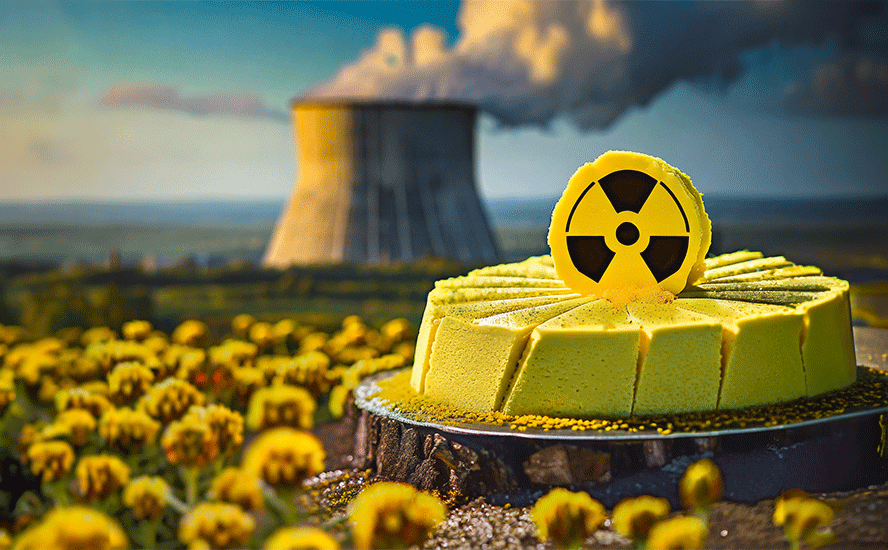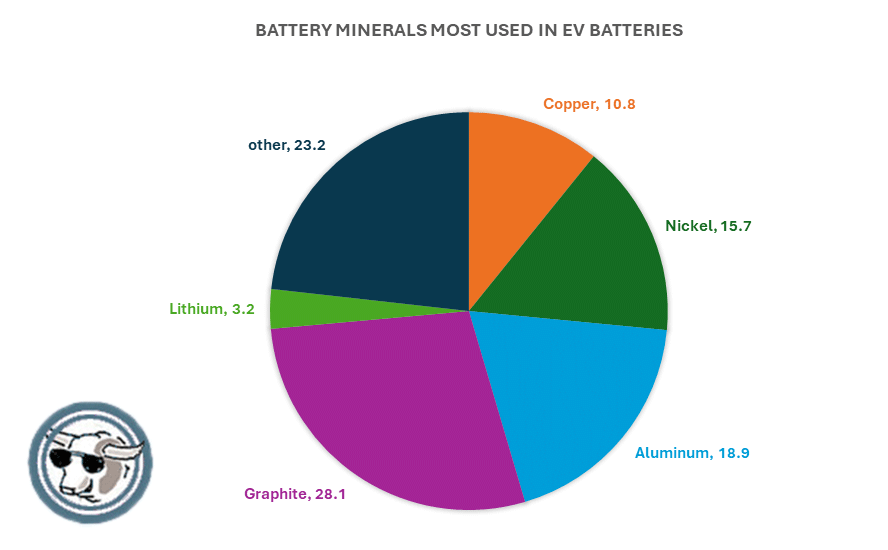Recent nuclear fusion news is more about hydrogen bombs than energy related – Richard Mills
2022.12.16
Those who grew up in the 1980s and were educated in North America probably remember watching a film called ‘If You Love This Planet’.
The 1982 short documentary records a lecture given to students by physician and anti-nuclear activist Dr. Helen Caldicott, about the dangers posed by nuclear weapons. In her lecture, Dr. Caldicott inserted clips of 22 nuclear explosions and newsreels of survivors of the bombing of Hiroshima.
Released during the Reagan administration at the height of Cold War nuclear tensions between the United States and the Soviet Union, ‘If You Love This Planet’ was officially designated as “foreign political propaganda” by the United States Department of Justice and temporarily banned. The subsequent uproar over that action gave the film a publicity boost, and it later won the 1982 Academy Award for Best Documentary. (Wikipedia)
The collapse of the Soviet Union and the lifting of the “Iron Curtain” in 1989 ushered in an era of nuclear peace. Forty years after ‘If You Love This Planet’, a new generation of school children has never even seen, let alone worried about, a nuclear explosion or attack.
Nowadays, the threat to the planet is environmental, not nuclear. There is increasing awareness that clean energy solutions for future generations have to be developed now.
That has some turning to nuclear fusion as part of a cleaner, safer future, even though the science behind the creation of nuclear power is the same as that used to generate nuclear weapons.
Nuclear power today
Uranium is the fuel needed to create the nuclear reaction that can either make nuclear power or nuclear weapons. To make nuclear fuel from uranium ore, the uranium is first extracted from the rock, then enriched with the uranium-235 isotope, before being made into pellets that are loaded into assemblies of nuclear fuel rods. In a nuclear reactor, several hundred fuel assemblies containing thousands of small pellets of uranium oxide are in the reactor core. The nuclear chain reaction that creates energy starts when U-235 splits or “fissions”, which produces a lot of heat in a controlled environment.
In a conventional nuclear reactor, the pressurized water reactor, fuel rods containing uranium pellets are placed in water. Visualized as a giant kettle, the heat generated from the pellets boils water to create steam, which turns turbines to generate electricity. But the downside of conventional nuclear power stations is the nuclear reaction also produces plutonium, which is highly radioactive, and other wastes, causing a problem for disposal. Stronium-90 and cesium-137, contained in nuclear waste, have half-lives of about 30 years, but plutonium-239 takes 24,000 years to fully decay.
When it works the nuclear reaction is an efficient form of energy creation. One uranium pellet weighing just 6 grams produces the same amount of energy as a tonne of coal. But it also leaves a lot of radioactive waste that needs to be incinerated, encased in concrete, or buried deep underground for centuries.
When nuclear power goes wrong, the fallout is catastrophic. Nuclear meltdowns like Chernobyl in Russia, Three Mile Island in the US, and Fukushima in Japan are burned into the collective consciousness and serve as constant reminders of the dangers of nuclear power that drive the anti-nuke movement.
While nuclear energy generation will never be without risks, proponents argue these are manageable and small compared to the risk of increased greenhouse gases that are warming the planet. Because nuclear does not require the burning of fossil fuels, it is always in the mix of energies required to make the transformation from an oil-based economy to one where renewable and nuclear energies make up a larger proportion of our global electricity supply.
Fusion
For decades, the holy grail of nuclear scientists has been a commercially viable nuclear fusion power plant, that would replicate the same process that takes place naturally in the Sun.

Unlike fission, the way we produce nuclear energy now, fusion merges atoms together instead of splitting them. It would create many times more energy than fission, without the use of radioactive materials, meaning no nuclear waste is produced (although neutron bombardment would cause a nuclear fusion plant to become slightly radioactive, these radioactive products are short-lived).
However, because nuclear fusion requires more energy than it produces, it has thus far eluded scientists as a viable energy solution.
Breakthrough at NIF
This week, the US Department of Energy made what mainstream media are calling, “a historic announcement,” regarding scientists achieving a net energy gain in a nuclear fusion reaction, meaning that more energy was generated than the amount of energy needed to power the reaction. (CNBC, Dec. 13, 2022)
The reaction took place at the DOE’s Lawrence Livermore National Laboratory in California, which houses the National Ignition Facility (NIF). There, a laser system consisting of 192 lasers bombarded a pea-sized capsule of deuterium-tritium, which are isotopes of hydrogen that have, respectively, one and two neutrons in their nuclei in addition to the single proton that is hydrogen’s nuclear characteristic. The capsule was heated to over 3 million degrees Celsius, causing an ignition that briefly simulated the conditions of a star. Light from the ignition can theoretically be picked up by a fluid and used to generate steam that powers a turbine.
It took 2.05 megajoules of energy input for the experiment, which generated 3.15MJ of fusion energy output. According to CNBC, The net energy gain of over 50 per cent is considered to be a significant accomplishment that indicates the viability of a clean energy resource that is free of emissions or harmful by-products.
“Ignition allows us to replicate for the first-time certain conditions that are only found in the stars and Sun. This milestone moves us one significant step closer to the possibility of zero carbon abundant fusion energy powering our society,” U.S. Energy Secretary Jennifer Granholm said in a press conference on Tuesday morning.
Unlike other polluting energy sources that release methane and carbon dioxide, helium is the only by-product of the nuclear fusion process.
The clean-energy angle was picked up by most mainstream media TV and print outlets. Bloomberg quoted the lab’s director, Kim Budil, saying the experiment could lead to the development of a commercial fusion plant “in several decades — not the 50 years or longer that researchers once feared.”
“Ignition is the first step, a truly monumental one, that sets the stage for a transformational decade in high-energy-density science and fusion research, and I cannot wait to see where it takes us,” Budil stated at the press coreference. I’m calling bullshit.

Building a bomb
But is that really the goal?
Buried further down (and in other news coverage), the story hints at a more nefarious purpose; the creation of a thermonuclear weapon and the maintenance of the US nuclear arsenal:
Officials stressed that the main purpose of the facility where the breakthrough took place was to study the behavior of thermonuclear weapons as part of the “stockpile stewardship” program. To do that, it needed to achieve ignition.
The most immediate impact of the US experiment will be felt by engineers in charge of maintaining the US nuclear-weapons stockpile. They’ll be able to use the data to model how warheads are aging and eliminate the need to conduct new atomic testing. The Energy Department is administering a $1 trillion program to maintain and modernize US nuclear arms and the Lawrence Livermore National Laboratory plays a key role in that effort.
Indeed as Bloomberg finds in another article, The Lawrence Livermore National Laboratory, where the experiment took place, is one of the Department of Energy’s preeminent nuclear-weapons research centers. The data yielded by the fusion test will allow scientists to model what happens during a thermonuclear explosion. That helps to ensure the nation’s more-than-5,000 aging warheads can be deployed — effectively creating a new way to gauge the arms’ shelf life.
“Fusion is an essential process in modern nuclear weapons,” said Marvin Adams, the deputy administration of defense programs at the National Nuclear Security Administration. “This achievement will advance our national security. It will lead to laboratory experiments that help NNSA defense programs continue to maintain confidence in our deterrent without nuclear explosive testing.”
Song by North Mississippi Allstars – “What You Gonna Do?”
The US hasn’t tested a nuclear weapon in more than 30 years. Russia and North Korea are two countries that do not share the United States’ reluctance to test atomic weapons and thermonuclear warheads.
American efforts to make a hydrogen bomb stem from the Manhattan Project of the 1940s. Research resumed in earnest following the Soviet Union’s testing of an atomic bomb in August, 1949. Six months later, US President Truman ordered the development of a hydrogen bomb. Manhattan Project mathematician Stanislaw Ulam, and Edward Teller, a physicist studying nuclear fission, partnered to design the first hydrogen bomb. It was tested at Enewetak atoll on November 1, 1952.
Two years ago, Russia’s state-run nuclear energy agency, Rosatom, de-classified a video of the largest-ever hydrogen bomb blast and released it on Youtube. Terrifying to watch, it shows the 27-ton “Tsar Bomb” being detonated on October 30, 1961. The bomb was dropped by parachute from a Tu-95V bomber and autonomously exploded 13,000 feet about Sukhoy Nos, a cape on Severny Island, north of the Matochkin Strait connecting the Barents and the Kara Sea.
The Tsar Bomb carried 50 million tonnes of TNT, making it 3,333 times more powerful than the 15,000 tonnes of TNT dropped onto Hiroshima by ‘Little Boy’. The explosion was visible 620 miles away, and produced a mushroom cloud more than 37 miles high.


In 2016, North Korea reportedly carried out its first successful test of a hydrogen bomb, although the fact that the blast appeared to be less powerful than the DPRK’s 2013 detonation of a plutonium-based bomb, raised doubts that it had engineered a massively more sophisticated and destructive weapon. (The Globe and Mail, Jan. 6, 2016)
Atomic bombs and hydrogen bombs are similar in that both use radioactive material (uranium, plutonium) for the explosive material.
Apart from being thousands of times more powerful than atomic bombs, which are creating using fission, just like nuclear-power plants, hydrogen bombs utilize both fission and fusion to create an explosion.
“Think what’s going on inside the sun,” Takao Takahara, professor of international politics and peace research at Meiji Gakuin University in Tokyo, told Associated Press. “In theory, the process is potentially infinite. The amount of energy is huge.”
Another difference: hydrogen bombs can be made small enough to fit on a head of an intercontinental missile, making them especially threatening if used in an attack on the United States by North Korea, or any other nuclear-armed state.
Drawbacks
“The fact that you have net energy gain does not mean you’ll have a commercial device on the market,” said Chris Gadomski, head nuclear analyst for BloombergNEF. “Yes, we have fusion, but at what cost?”
Above-mentioned Kim Budil, from the Lawrence Livermore National Laboratory, says “There are very significant hurdles, not just in the science, but in technology. This is one igniting capsule, one time and to realize commercial fusion energy, you have to…produce many, many fusion ignition events per minute and you have to have a robust system of drivers to enable that.”
The Economist agrees with Bloomberg that the purpose of fusion research is more defense than energy related, stating that “NIF… is a fusion operation, the main purpose of which is to investigate the physics of hydrogen bombs.”
In a down-beat article titled, ‘Controlled fusion is little nearer now than it was a week ago’, the international news magazine acknowledges the fact that researchers were able to light a nuclear spark “that has burned for a while through the pellet in a self-sustaining way —something never before achieved, and which might be scaled up to release a far bigger fraction of the potential energy in the pellet’s contents.”
However, the technology is hamstrung by the amount of power it takes to generate the laser beams, a limitation that will not be solved by this week’s successful experiment. The Economist explains:
Unfortunately, the huge inefficiencies involved in creating those beams mean that only a tiny fraction of that generative energy does arrive at the pellet. Not really the basis for a workable reactor.
It thus seems unlikely that the future of civil fusion power (if it has one) lies with inertial-confinement by laser. The technology is fiddly. And even with lasers more modern than that used by nif (which opened in 2009) the process of “pumping” the device to create the beam is inherently inefficient. None of the increasingly numerous attempts to commercialise fusion employs inertial-confinement by laser. Most are based on tokamaks, which heat the deuterium-tritium mixture into a plasma, rather than freezing it into a pellet, and do the compressing magnetically.
Tokamaks
In July 2021, ground was broken on assembling the million-component International Thermonuclear Experimental Reactor (ITER), coming shortly after its seven-member nuclear nations successfully installed and assembled the reactor base.
Plugging the fossil fuel energy gap with nuclear
Located in southern France, the 23,000-ton ITER Tokamak is one of a handful of “miniature suns” under development worldwide. Thirty-five years in the making, it will eventually form the planet’s largest “tokamak”, or plasma reactor. In 2025, when the giant assembly project is expected to be completed, with all its core parts installed, fully integrated and ready to produce plasma, the reactor will begin a month-long process of heating up to 150 million degrees Celsius, with a trio of heating elements pulling a combined 50MW of power, enough for about 10,000 homes. That will bring the plasma to a temperature 10 times greater than the sun’s in the doughnut-shaped reactor to generate as much as 500MW of energy for brief bursts, explains Popular Mechanics.
It will take another five years for full plasma generation, expected in 2030.
Meanwhile, China has fired up a tokamak of its own. The country’s HL-2M Tokamak reactor will, like ITER in France, employ ultra-powerful magnets to create and fuse hot plasma at temperatures over 150 million degrees C. “The development of nuclear fusion energy is not only a way to solve China’s strategic energy needs, but also has great significance for the future
sustainable development of China’s energy and national economy,” said the People’s Daily, the official news outlet of the Chinese Communist Party.
Apparently, China plans to collaborate, not compete, with the ITEL group in France, to develop a reliable form of nuclear fusion. However, it’s hard to imagine Beijing doing anything other than pursuing its own interests, given its history of acquiring offshore resources and locking up supply/ processing capacity of critical metals like rare earths, lithium, cobalt and graphite.
Conclusion
The breakthrough the DOE announced this week involved the momentary ignition of a single fuel capsule, not something that can run a power plant. For the technology to move out of the lab, fusion would need to be affordable and easy to build.
Moreover, as The Economist states, Unfortunately, the huge inefficiencies involved in creating those [laser] beams mean that only a tiny fraction of that generative energy does arrive at the pellet. Not really the basis for a workable reactor.
If the future of civil fusion power is not with inertial-confinement by laser (tokamak technology is preferred), then it begs the question, what is the point of the research being done at the Lawrence Livermore national lab?
There is clearly a military purpose — as Bloomberg writes,The Energy Department is administering a $1 trillion program to maintain and modernize US nuclear arms and the Lawrence Livermore National Laboratory plays a key role in that effort.
News of a fusion reaction that yielded more energy than a laser put into it (although that isn’t counting the amount of energy needed to power the laser in the first place, about 300 megajoules) coincides with increasing tension between the United States and its nuclear-armed geopolitical rival, Russia.
Although Lawrence Livermore’s Mark Hermann noted how NIF’s fusion research aided the United States’ nuclear deterrent capabilities, there is an increasing nuclear threat from Russia. In September Vladimir Putin warned that Russia would use “all available means” to defend the parts of Ukraine it has annexed. Putin went a step further when he said Russia is considering adding to its military doctrine, a preventative nuclear first strike.
In 2019, Donald Trump withdrew the United States from the Intermediate-Range Nuclear Forces Treaty, signed in 1987 between US President Ronald Reagan and Soviet leader Mikhail Gorbachev — raising fears of a new arms race. The treaty banned missiles with ranges between 310 and 3,400 miles (500-5,500 km); now they can be freely developed.
While a hydrogen bomb has never been used in battle by any country, tests indicate the devastation such a device would cause; the H-bomb is a planet-buster with the power to wipe out entire cities and kill significantly more people than the tens of thousands who died when atomic bombs were dropped on Hiroshima and Nagasaki, Japan.
Given this fact, the question needs to be asked: Should we really be trying to advance science that has the ability to destroy the human race? Especially considering that fusion energy research to date is mostly geared towards a military purpose, and inertial-confinement technology has largely been discredited?
Richard (Rick) Mills
aheadoftheherd.com
subscribe to my free newsletter
Legal Notice / Disclaimer
Ahead of the Herd newsletter, aheadoftheherd.com, hereafter known as AOTH.
Please read the entire Disclaimer carefully before you use this website or read the newsletter. If you do not agree to all the AOTH/Richard Mills Disclaimer, do not access/read this website/newsletter/article, or any of its pages. By reading/using this AOTH/Richard Mills website/newsletter/article, and whether you actually read this Disclaimer, you are deemed to have accepted it.
Any AOTH/Richard Mills document is not, and should not be, construed as an offer to sell or the solicitation of an offer to purchase or subscribe for any investment.
AOTH/Richard Mills has based this document on information obtained from sources he believes to be reliable, but which has not been independently verified.
AOTH/Richard Mills makes no guarantee, representation or warranty and accepts no responsibility or liability as to its accuracy or completeness.
Expressions of opinion are those of AOTH/Richard Mills only and are subject to change without notice.
AOTH/Richard Mills assumes no warranty, liability or guarantee for the current relevance, correctness or completeness of any information provided within this Report and will not be held liable for the consequence of reliance upon any opinion or statement contained herein or any omission.
Furthermore, AOTH/Richard Mills assumes no liability for any direct or indirect loss or damage for lost profit, which you may incur as a result of the use and existence of the information provided within this AOTH/Richard Mills Report.
You agree that by reading AOTH/Richard Mills articles, you are acting at your OWN RISK. In no event should AOTH/Richard Mills liable for any direct or indirect trading losses caused by any information contained in AOTH/Richard Mills articles. Information in AOTH/Richard Mills articles is not an offer to sell or a solicitation of an offer to buy any security. AOTH/Richard Mills is not suggesting the transacting of any financial instruments.
Our publications are not a recommendation to buy or sell a security – no information posted on this site is to be considered investment advice or a recommendation to do anything involving finance or money aside from performing your own due diligence and consulting with your personal registered broker/financial advisor.
AOTH/Richard Mills recommends that before investing in any securities, you consult with a professional financial planner or advisor, and that you should conduct a complete and independent investigation before investing in any security after prudent consideration of all pertinent risks. Ahead of the Herd is not a registered broker, dealer, analyst, or advisor. We hold no investment licenses and may not sell, offer to sell, or offer to buy any security.
Legal Notice / Disclaimer
Ahead of the Herd newsletter, aheadoftheherd.com, hereafter known as AOTH.Please read the entire Disclaimer carefully before you use this website or read the newsletter. If you do not agree to all the AOTH/Richard Mills Disclaimer, do not access/read this website/newsletter/article, or any of its pages. By reading/using this AOTH/Richard Mills website/newsletter/article, and whether you actually read this Disclaimer, you are deemed to have accepted it.


